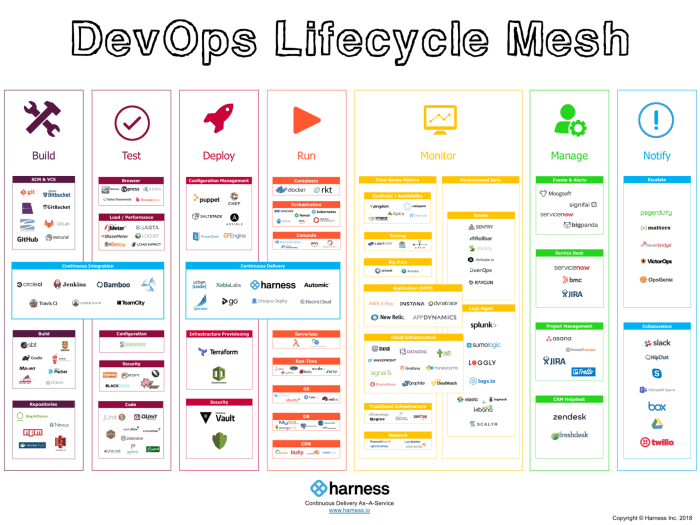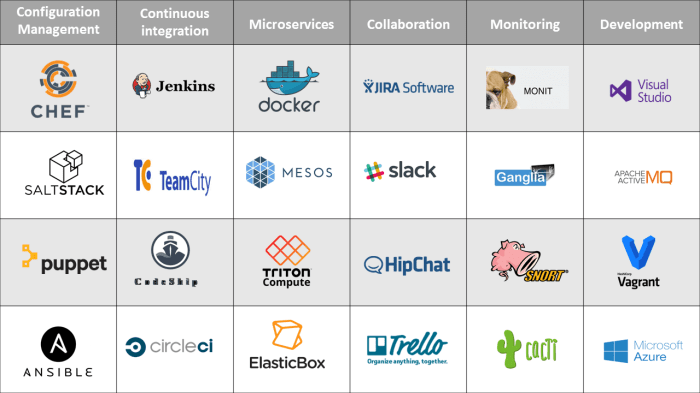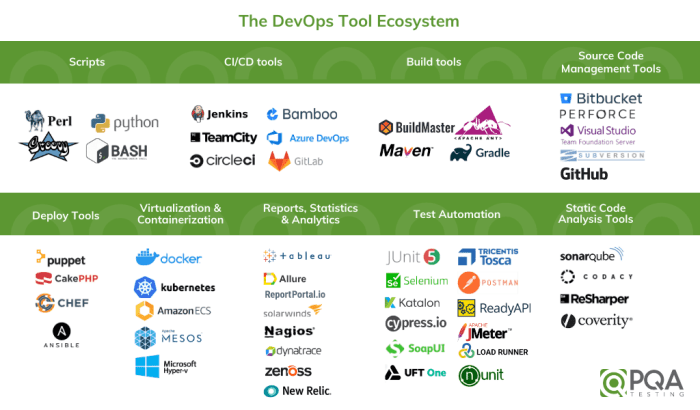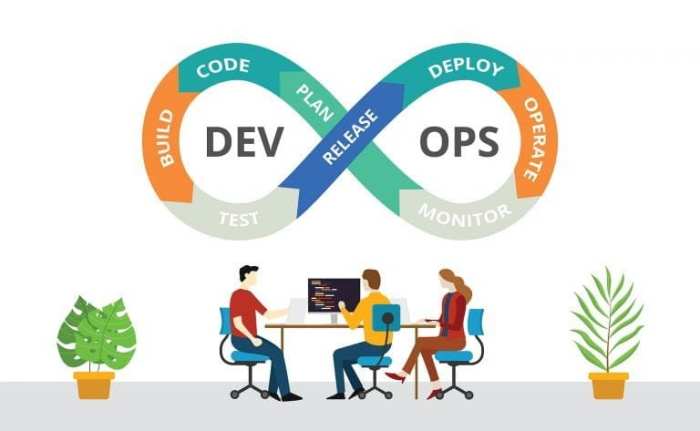Match the devops tool to its respective category – Matching DevOps tools to their respective categories is a crucial step in optimizing the efficiency and effectiveness of your DevOps pipeline. By categorizing tools based on their functionality and purpose, organizations can streamline tool selection, improve collaboration, and enhance overall DevOps maturity.
This comprehensive guide provides a structured approach to matching DevOps tools to categories, empowering you to make informed decisions and maximize the value of your DevOps investments.
1. DevOps Tool Categories

DevOps tool categories encompass a wide range of specialized software applications designed to streamline and automate various aspects of the DevOps lifecycle. Each category serves a distinct purpose and offers unique functionalities tailored to specific tasks.
Source Control
- Purpose:Managing and tracking code changes throughout the development lifecycle.
- Functionality:Version control, branching, merging, conflict resolution.
- Examples:Git, Subversion, Mercurial.
Continuous Integration
- Purpose:Automating the integration of code changes into a central repository.
- Functionality:Automated builds, unit testing, code analysis.
- Examples:Jenkins, CircleCI, Travis CI.
Continuous Delivery
- Purpose:Automating the deployment of code changes to production environments.
- Functionality:Automated deployment, testing, rollback.
- Examples:Azure DevOps, AWS CodeDeploy, Spinnaker.
Configuration Management
- Purpose:Managing and maintaining the configuration of infrastructure and applications.
- Functionality:Infrastructure provisioning, application deployment, change management.
- Examples:Puppet, Chef, Ansible.
Monitoring
- Purpose:Tracking and analyzing the performance and health of applications and infrastructure.
- Functionality:Metrics collection, alerting, log analysis.
- Examples:Prometheus, Grafana, Splunk.
Log Management
- Purpose:Centralizing and analyzing application and infrastructure logs.
- Functionality:Log collection, aggregation, search, visualization.
- Examples:ELK Stack, Graylog, Splunk.
Security, Match the devops tool to its respective category
- Purpose:Protecting applications and infrastructure from security threats.
- Functionality:Vulnerability scanning, intrusion detection, access control.
- Examples:OWASP ZAP, Qualys, Nessus.
2. Matching DevOps Tools to Categories

To match DevOps tools to their respective categories, users can refer to the interactive table below:
| DevOps Tool | Category |
|---|---|
| Git | Source Control |
| Jenkins | Continuous Integration |
| Azure DevOps | Continuous Delivery |
| Puppet | Configuration Management |
| Prometheus | Monitoring |
| ELK Stack | Log Management |
| OWASP ZAP | Security |
3. Tool Evaluation Criteria: Match The Devops Tool To Its Respective Category

When evaluating DevOps tools for matching to categories, the following key criteria should be considered:
Functionality
The tool should provide the necessary features and capabilities to effectively support the tasks within its category.
Usability
The tool should be user-friendly and intuitive, with a clear and accessible interface.
Integration Capabilities
The tool should seamlessly integrate with other DevOps tools and technologies within the organization’s ecosystem.
Support
The tool should come with comprehensive documentation, training resources, and responsive technical support.
4. Best Practices for Tool Matching

To effectively match DevOps tools to categories, follow these best practices:
- Identify the specific requirements and goals of the DevOps team.
- Research and compare different tools within each category.
- Consider the criteria discussed in the previous section.
- Conduct pilot tests or proof-of-concepts to evaluate the tools in real-world scenarios.
- Continuously monitor and evaluate the performance and effectiveness of the selected tools.
Quick FAQs
What are the key benefits of matching DevOps tools to categories?
Matching DevOps tools to categories offers numerous benefits, including improved tool selection, enhanced collaboration, streamlined onboarding, and increased DevOps maturity.
How do I evaluate DevOps tools for matching to categories?
When evaluating DevOps tools for matching to categories, consider factors such as functionality, usability, integration capabilities, support, and alignment with your specific DevOps goals.
What are some common pitfalls to avoid in the tool matching process?
Common pitfalls to avoid include relying solely on vendor marketing materials, failing to involve stakeholders in the decision-making process, and neglecting to consider the long-term implications of tool adoption.